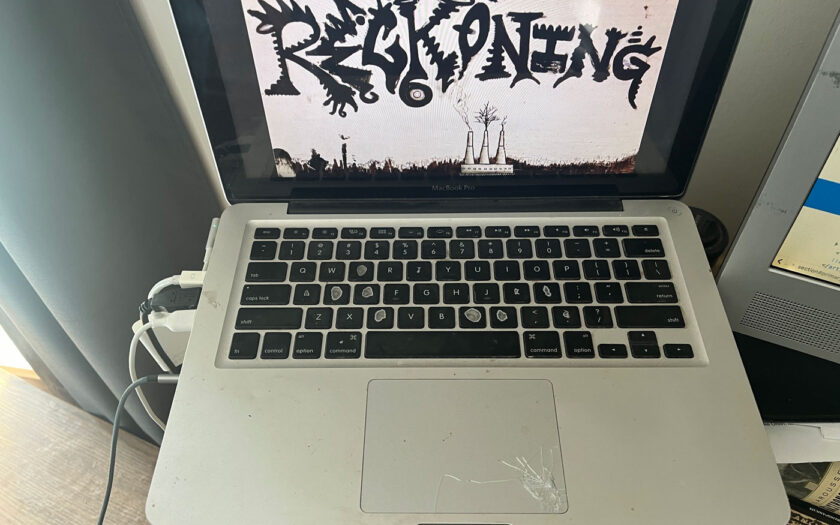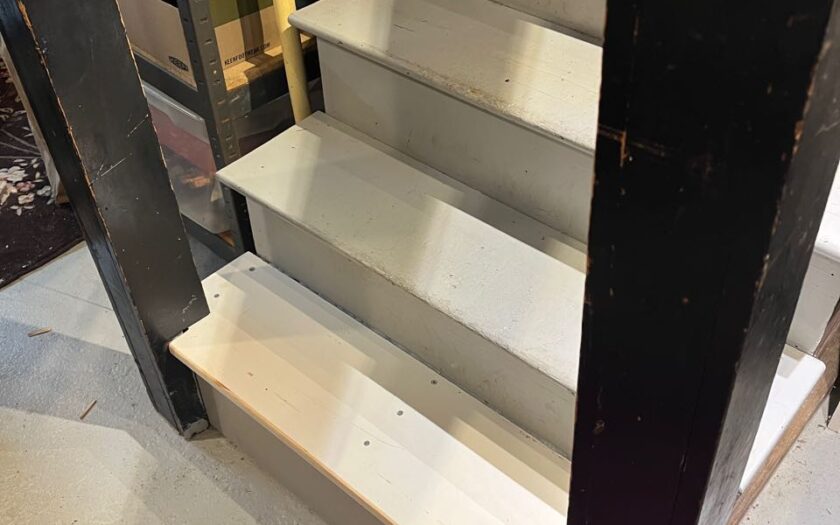Degrowth: that’s the idea that, given endless growth is and always was a capitalist delusion, we should all actively be going in the other direction, making less money, being less productive, buying fewer things, taking up less space, expending fewer resources. A lot of people get really grumpy when they hear about it, because obviously: it is an anticapitalist concept, people have to give up amenities if they’re going to do it, and nobody (I mean, except those of us who see the painfully obvious writing on the wall and know the choice isn’t between continuing to grow and not continuing to grow, it’s between retreat and rout, in other words doing it on purpose in an orderly fashion or having it handed to us on a burning platter which also contains our heads) wants to give up anything.
Now look at the state of big tech, of the internet, computers, phones, machine learning, the cloud, cryptocurrency, the concept of “disruption” somehow assigned a positive connotation in the context of capital, X, etc etc. Doctorow calls this “enshittiffication”, and a finer neologism I have not seen. But what if—run with me here—tech has already hit the massive wall of fire and beheadings that is already coming for all of us? We made it to “the golden age of TV”, and after the golden age, there comes a fall. Free fall is exactly what this feels like. I have to drop out of Dropbox and build my own open-source cloud somehow, using borrowed time, because they’re going to steal all my content (and Reckoning‘s) and feed it to their AI. If I want social media I have to enter the lockstep of a billionaire. Ever since I heard of the internet, I’ve been told that computing capacity and speed will double every two years until the heat death of the universe. It’s fairly obvious that stopped being the case early in the 2000s, and what they’ve done to live up to that prediction since is make more and more computers, with more processors, using more resources, and then wasting that processing power making the internet ever more unnecessarily complicated in the name of monetization.
Where to from here, then, except down?
And again, there are two ways to do it, proactively and reactively, heads on platters and otherwise. We know the consequences if we don’t back away, because they’re happening: identity theft, privacy violations, disinformation, intellectual and artistic poverty, real poverty due to the catastrophic concentration of wealth, corporate-captured democracy, deregulation, kleptocracy.
De-enshittify. Divest from corporate-captured technologies and go back to all the old self-hosted solutions that still work and aren’t going anywhere. Self-hosted, open-source websites, email, newsletters. DIY cloud. Hard copy digital media. Computers made before 2005. Phones that—what? Only work as phones? Fat chance, even for me. In a lot of ways I feel like I can be in the vanguard. I live small, I travel as little as I can, drive as little as I can, buy as little as I can. And it works, I can use the money I didn’t spend on a gym membership, a daily seven dollar coffee, beer, bread, meat, gas, apples, or a semiannual overseas plane ticket on a journal of creative writing on environmental justice instead. But when it comes to our (my) engineered addiction to devices, I feel far less confident. I try to adapt how I use those devices, slowly, gradually, faking myself into it the way climate change is faking us into thinking snow always tasted salty and summer forecasts for smoke inhalation are normal and live-withable. And I laugh at myself, at the fact that I can give up fossil fuels more easily than I can give up tapping the little icon when the red badge lights up saying someone somewhere liked something I said.
But even if that’s all I can manage, I’m not about to throw up my hands, cede the entire concept of individual action to the corporate lobbyists who worked so hard to render it meaningless, sit back and concern myself with clearing the red badges off the icons until the end. Dana Fisher talks about crisis points, “climate shocks”, about how maybe, once the really bad climate consequences descend, the ones that incontrovertibly impact all of us, not just the poor, the disabled, the not-white, the coastal, the low-lying, the arctic, but actually everyone, that’s when finally we’ll arrive at consensus and act to avert even worse consequences. I hope so? But in the meantime there is a ton of work to be done for those who don’t need to be clobbered with a two-by-four about it.
All this pertains to the concept of the “brightweb” I threw out half-seriously in that post about missing stairs. This hypothetical brightweb is bright not because it’s well-lit by corporate and government surveillance but because it’s curated by humans who care about other humans, it’s small and interpersonal instead of vast and facelessly engaged in the elision of the human, and because it runs on old, “outdated”, open, functional, non-enshittified technology. It’s hypothetical, for now, but not because it’s not already out there. It’s just not self-identifying as one thing; it’s not unified. Mostly these days the things that unify us are already corporate-captured: social media, journalism, nations, leaders. So we’re all out here laboring in our own individual ruts. At least for now.
Am I proposing a De-Enshittifiers Union? Why not?
Want to join? For a start, let’s quit using some of that shit.






